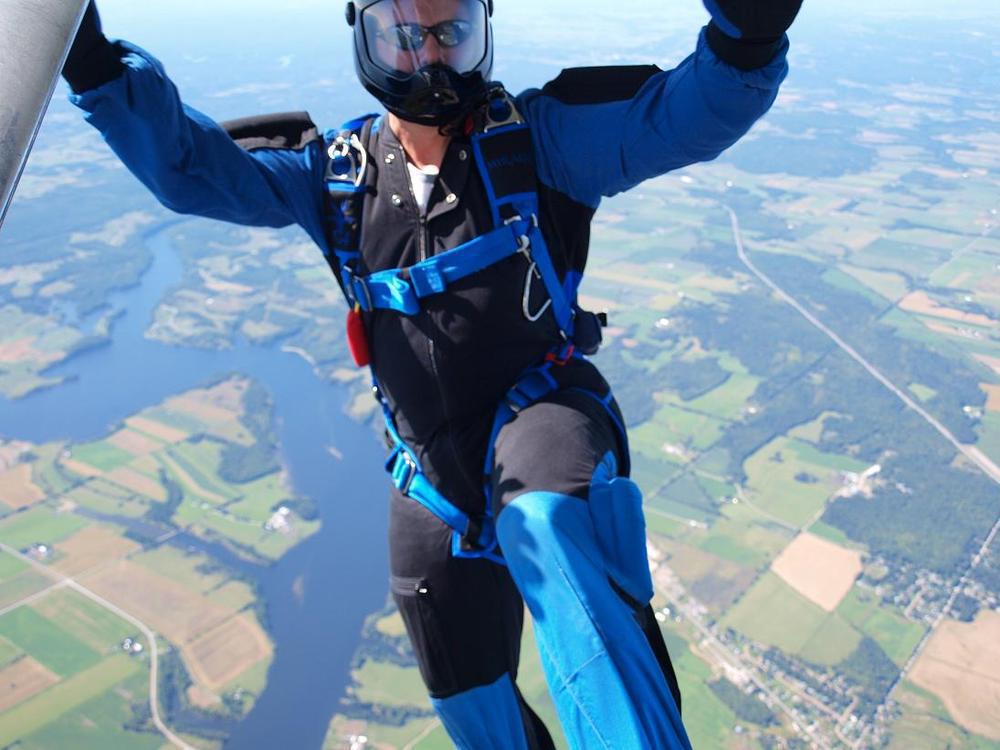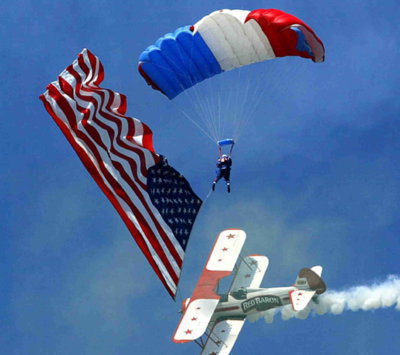Recommended Posts
skypuppy 1
QuoteCSPA
Basic Safety Rules
2.3 When the intended point of landing is within 1 km horizontally of open water, all parachutists shall wear a floatation device capable of supporting themselves and their equipment.
Not really any gray area there.
Any less than two floatation devices voids the insurance as well as defense fund access.
__________________________________________________
I'm guessing the insurance company would still cover it and the instructor defence fund as well, if for no other reason then to avoid having a precedent set against the dropzone....
Bruce McConkey 'I thought we were gonna die, and I couldn't think of anyone
feuergnom 24
QuoteI just don't see any room for interpretation here.
http://www.dropzone.com/cgi-bin/forum/gforum.cgi?post=2014206;search_string=tandem%20fatality%20hawaii;#2014206
Both should wear floatation gear.
_Am
in the mentioned incident it wouldn't have made any difference
dudeist skydiver # 666
LaRusic 0
QuoteI once saw a Canadian jumper at my home drop zone with a really small flotation device attached to her rig--smaller than a beer can. I can only find the Stearns style on the web. Any good links for compact flotation devices that could be affixed to a rig? thx
You are probably thinking of the aqua buoy, its really tiny about half the size of a beer can. likely wont hold too much stuff up. An alternative is a buddi buoy, they are a bit larger and will probably hold you up for a period of time. I have one on my rig as we are close to water, sits just above the leg strap out of the way of everything.
www.dzsports.co.uk/floatation-device-209-p.asp
Dudeist Skydiver # 10
QuoteQuoteI once saw a Canadian jumper at my home drop zone with a really small flotation device attached to her rig--smaller than a beer can. I can only find the Stearns style on the web. Any good links for compact flotation devices that could be affixed to a rig? thx
You are probably thinking of the aqua buoy, its really tiny about half the size of a beer can. likely wont hold too much stuff up. An alternative is a buddi buoy, they are a bit larger and will probably hold you up for a period of time. I have one on my rig as we are close to water, sits just above the leg strap out of the way of everything.
www.dzsports.co.uk/floatation-device-209-p.asp
IIRC those are just basically a Mylar balloon, some guys were playing with one at the swoop pond a while back...did take much to destroy it, better than nothing, but just barely.
~ If you choke a Smurf, what color does it turn? ~
LaRusic 0
but it does fulfill the floatation device requirement
Dudeist Skydiver # 10
DJL 235
QuoteAll in all it works better as a gear marker
I think what you guys are referring to is also called a corpse marker. The only thing that would do a non-swimmer (student) any good is something like THIS. It's what I wear when sailing offshore. It's pricey.
Channman 2
QuoteQuoteQuote.why would a tandem pair in the water stay 'connected' ?
If the tandem master and student end up in the water with rough seas, assuming that flotation devices can keep the pair on the surface, staying connected could help to keep the two people together.
I'm not saying that this is or isn't the correct thing to do, I'm just answering your question.
Definitely NOT the thing top do.
That's why ya need a flotation device for each person...can't swim or maneuver strapped together, and after time the gear will soak up water & sink.
And how about if one person panics, the other is bolted to a 'drowning' scared man
.
If you want to tie-off together, hook-knife a suspension line.
Flotation for each jumper is a good idea as well being manditory, however in rough seas the parachute, if still connected can act as a sea anchor and can submerge the instructor and student with flotation activated. So cutting the main away and disconnecting the student I believe is important
Also Spare Air for both student and instructor is a good idea if a water landing could occur giving the instructor and student up to 15 breaths of air and if submerged they could skip breath giving them additional time to work out of entanglements.
There is a cost / benefit analysis one would have to do before strapping a pressurized air cylinder or two, on for every skydive.
Unless the tandem pair were intentionally doing a water jump I think a spare air would cause more problems than it's worth.
Imagine a rough landing on concrete, I wouldn't want that thing strapped to me!
For possible water landings, I have a 1/2 dozen airline 'horse collars' that work great.
They fit comfortably under a jumpsuit, are light and non-restrictive.
It's of course important to remember to undo the chest strap and open the jumpsuit prior to inflation.
They work good and are pretty cheap if ya can find them.
~ If you choke a Smurf, what color does it turn? ~
erdnarob 1
But don't worry Rob, I am persuaded that one water gear for each (instructor and passenger) is a must do. I just said Barry I will put that as a thread in DZ.com and see... I got a nice discussion. Thanks everybody. Very interresting indeed.
DJL 235
QuoteIt's a very good idea to ask the Navy Seals. But I wonder if they do tandem in the water. I was at San Diego Otay lake DZ once and the Navy Seals were on training there (landing on the ground) but I missed my chance to ask them. Next time!
But don't worry Rob, I am persuaded that one water gear for each (instructor and passenger) is a must do. I just said Barry I will put that as a thread in DZ.com and see... I got a nice discussion. Thanks everybody. Very interresting indeed.
I'm not sure that the SEALs could give you anything that is relevant to civilian tandem jumping. Ask anyway, regardless of what they say, it'll probably be something cool.
riggerrob 613
Those Comfort Series inflatable flotation vests are popular with float-plane pilots.
They are one of the few types of flotation that is graceful when climbing out of Cessna 185, but still provide enough flotation to keep you alive.






Share this post
Link to post
Share on other sites